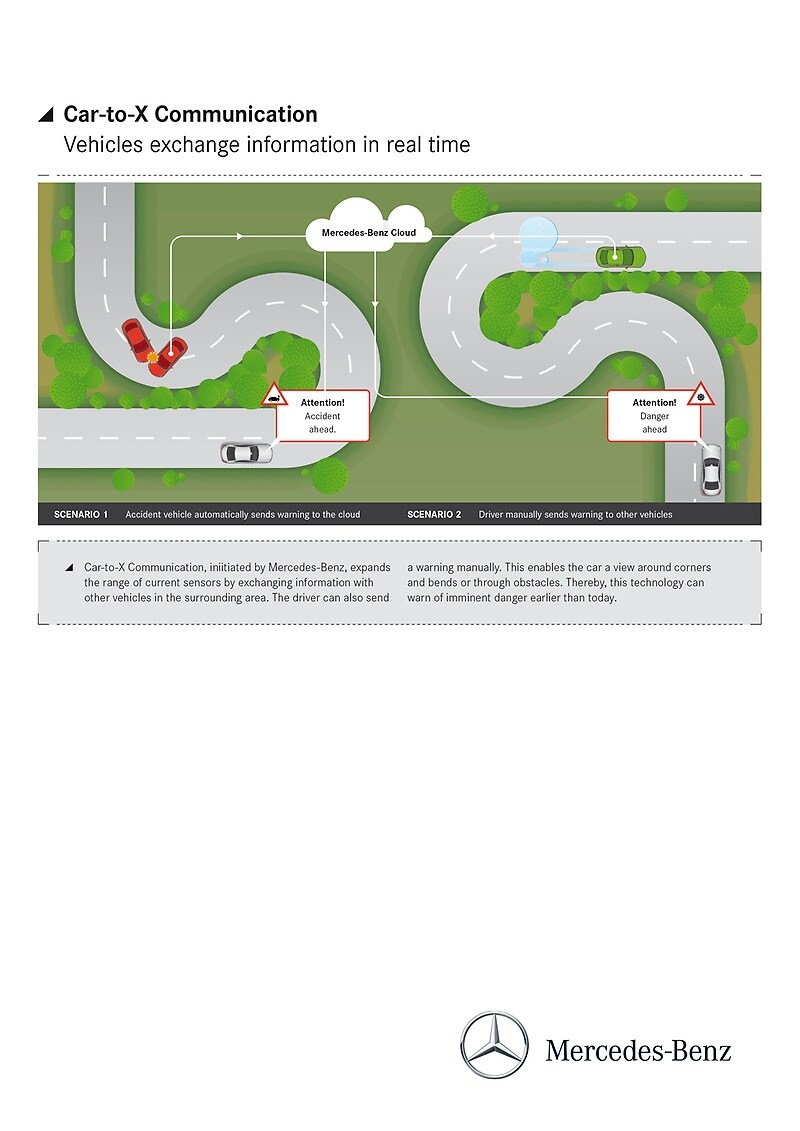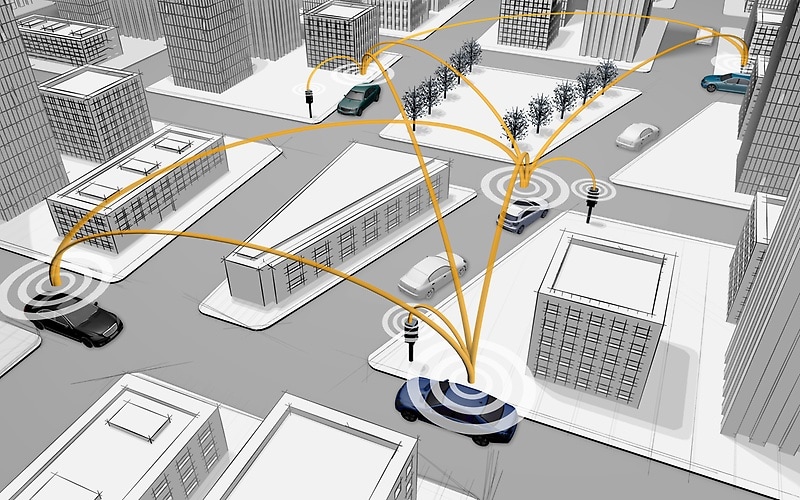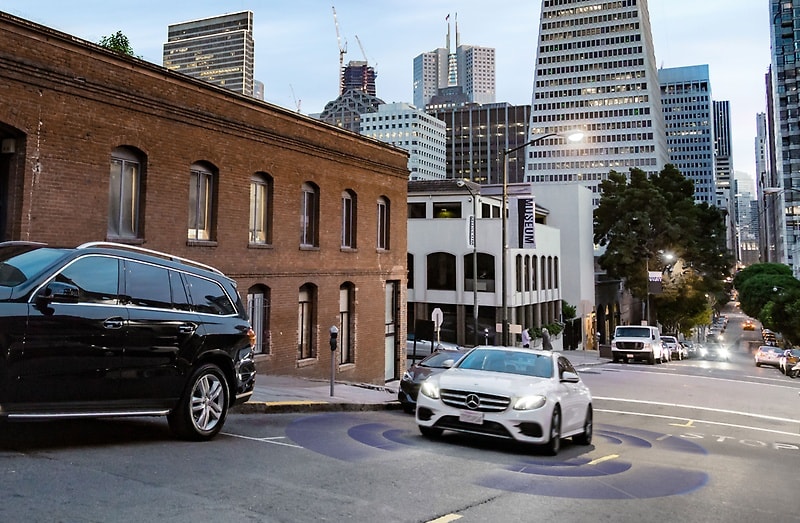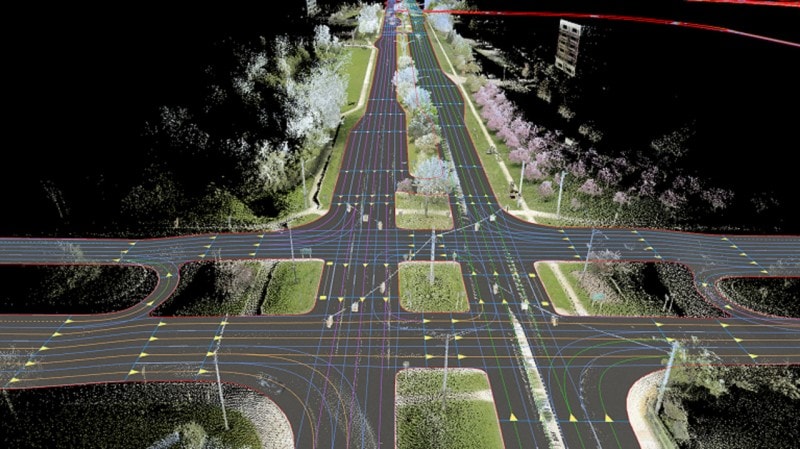At Mercedes-Benz, it is not only the drivers who are connected to the mobile network: The vehicles have also long been communicating with each other – and with the infrastructure. Car-to-X technologies enable a completely new form of information exchange. With those, the networked car looks round the corner and through walls. It warns those coming behind it of hazards and prevents accidents. In other words: It ensures more safety and comfort. Another milestone towards autonomous driving has therefore been reached.
,xPosition=0,yPosition=0.5)
Car-to-X communication goes into series production




,xPosition=0.5,yPosition=0)